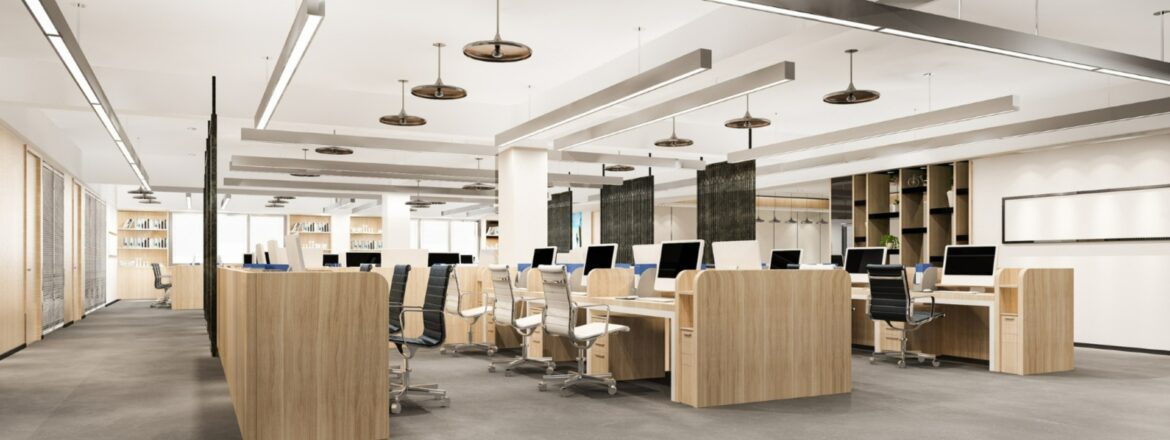Mastering the Art of Furniture Placement to Maximize Your New Office Space
Introduction:
Congratulations on your new office! Now comes the exciting task of arranging furniture in a way that maximizes productivity, functionality, and aesthetic appeal. Effective furniture placements can transform an ordinary office into a well-organized and inspiring workspace. In this blog, we will explore the art of furniture placement and provide tips to help you make the most of your new office space. Whether you’re setting up a home office or a corporate environment, these strategies will enhance your workflow and create an inviting atmosphere.
Assess Your Space and Workflow Needs:
Before diving into furniture placement, take the time to evaluate your office space and consider your workflow requirements. Take measurements and note any architectural features, such as windows, doors, or power outlets, that may impact furniture placement. Identify the primary functions of your office, such as individual workstations, meeting areas, storage, and collaborative spaces. By understanding your space and workflow needs, you can design furniture placement that optimizes functionality and productivity. Read about everything you need to know about furniture shifting services.
Consider Ergonomics:
Considering ergonomics in your office furniture arrangement is essential for promoting employee well-being, productivity, and long-term health. Ergonomic principles focus on designing the workspace to fit the needs of the individuals using it. Here’s how you can incorporate ergonomics into your office furniture arrangement:
- Adjustable Furniture: Invest in adjustable desks and chairs that can be easily tailored to each employee’s height, body type, and preferences. This allows for proper alignment and reduces the risk of musculoskeletal disorders.
- Monitor Placement: Position computer monitors at eye level, approximately arm’s length away from the user. This helps prevent neck strain and promotes good posture.
- Proper Chair Support: Ensure that chairs provide adequate lumbar support and are adjustable in height, armrests, and tilt. This helps maintain proper spine alignment and reduces the risk of back pain.
- Keyboard and Mouse Placement: Position keyboards and mice at a height that allows the user’s arms to be relaxed and parallel to the floor. Consider using ergonomic keyboard and mouse options to minimize strain on the wrists and hands.
- Lighting: Optimize lighting to reduce eye strain. Provide task lighting for focused work areas and adjustable blinds or curtains to control glare on screens.
- Break Areas: Incorporate ergonomic furniture in break areas, such as comfortable seating with back support, to allow employees to rest and recharge.
By considering ergonomics in your office furniture arrangement, you prioritize the well-being and comfort of your employees. This can lead to increased productivity, reduced absenteeism due to pain or discomfort, and improved overall job satisfaction. Creating an ergonomically-friendly workspace shows your commitment to the health and happiness of your team.
Create Zones:
Creating zones in your office space is an effective way to optimize functionality and promote productivity. By designating specific areas for different activities, you can create a well-organized and purposeful workspace. Here’s how you can create zones in your office:
- Identify Activities: Determine the primary activities that will take place in your office, such as individual work, meetings, collaboration, relaxation, or storage. Understanding the different functions will help you determine the zones you need to create.
- Furniture Placement: Use furniture placement to define each zone. Cluster desks or workstations together for individual work areas. Set up a designated meeting space with a table and chairs. Create a collaborative area with comfortable seating and a whiteboard. Allocate a relaxation zone with cozy seating or a breakout area with a coffee station. Consider using dividers or screens to visually separate the zones.
- Flow and Accessibility: Ensure that the zones are strategically positioned to allow for easy movement and accessibility. Consider the traffic flow between different areas and arrange the furniture accordingly. Avoid placing obstacles or furniture that obstructs the flow.
- Visual Cues: Use visual cues like rugs, different flooring materials, or lighting to differentiate between zones. This helps employees intuitively understand the purpose of each area and encourages them to use the spaces accordingly.
- Flexibility and Adaptability: Design the zones to be flexible and adaptable. Use modular furniture or movable partitions that can be easily rearranged to accommodate changing needs or future growth.
Creating zones in your office space enhances productivity by providing designated areas for specific activities. It helps employees focus on their tasks, encourages collaboration, and creates a sense of order and purpose. A well-defined zoning strategy contributes to an efficient and harmonious work environment.
Consider Traffic Flow:
Considering traffic flow is crucial when arranging furniture in your office space to ensure efficient movement and a productive work environment. Here are some tips to optimize traffic flow:
- Clear Pathways: Designate clear pathways that connect different areas of the office, such as workstations, meeting rooms, and common areas. Avoid placing furniture or obstacles that block these pathways, as it can impede the flow of employees and create congestion.
- Open Layout: Opt for an open layout that allows for easy navigation. Avoid cramming too much furniture in a confined space, as it can hinder movement and create a cramped atmosphere. Embrace a spacious and uncluttered design that facilitates smooth traffic flow.
- Strategic Placement: Position furniture in a way that encourages natural movement patterns. Place workstations and frequently used equipment in easily accessible areas. Consider the frequency and duration of interactions when arranging collaborative spaces to minimize disruption to other areas.
- Consider Meeting Points: Identify areas where employees tend to gather, such as water coolers, coffee stations, or collaborative spaces. Ensure that these areas are easily accessible and have enough space for people to gather without causing congestion in the surrounding areas.
- Flexibility: Allow for flexibility in your furniture arrangement to accommodate changes in the office layout or future expansion. Modular furniture and movable partitions can be useful in adapting the space to evolving needs.
By considering traffic flow in your furniture arrangement, you create a seamless and efficient workplace where employees can move freely, collaborate easily, and access resources without hindrance. You can seek help from the best furniture shifting services in Chennai . A well-designed traffic flow that enhances productivity, minimizes disruptions, and fosters a positive work environment.
Maximize Natural Light:
Maximizing natural light in your office space is a key factor in creating a productive and uplifting environment. Natural light has numerous benefits, including boosting mood, improving focus, and reducing eye strain. Here are some strategies to help you make the most of natural light:
- Positioning: Arrange workstations and desks near windows to allow natural light to reach as many areas as possible. Employees who have access to natural light tend to be more alert and motivated throughout the day.
- Window Treatments: Use adjustable blinds or curtains to control the amount of light entering the space. This allows you to regulate glare and maintain privacy while still enjoying the benefits of natural light.
- Reflective Surfaces: Incorporate light-colored or reflective surfaces in your office design. Mirrors, glass partitions, and glossy finishes can help bounce natural light around the room, creating a brighter and more spacious feel.
- Remove Obstructions: Ensure that windows are not obstructed by large furniture or equipment. Keep the window areas clear to allow maximum light penetration.
- Skylights and Light Tubes: If possible, consider installing skylights or light tubes in areas with limited access to natural light. These can bring in additional sunlight and create a more inviting atmosphere.
Remember that natural light should be supplemented with appropriate artificial lighting for cloudy days or evenings. By maximizing natural light in your office, you can create a vibrant and energizing workspace that enhances productivity and employee well-being.
Conclusion:
Mastering the art of furniture placement can significantly impact the productivity and functionality of your office space. By carefully considering your space, workflow needs, and ergonomic principles, you can create an environment that enhances employee well-being and promotes collaboration. Remember to create dedicated zones, optimize traffic flow, maximize natural light, and incorporate storage solutions. With well-thought-out furniture placement and the help of RKS Transport , your new office space will become an inspiring and efficient hub for your business.




